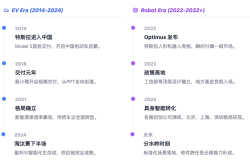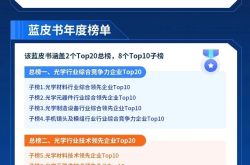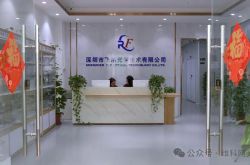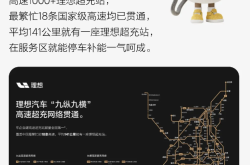What are we overlooking as food delivery orders surge?
![]() 07/17 2025
07/17 2025
![]() 663
663

E-commerce changes and hidden worries behind the rapid growth of instant retail.
China's e-commerce industry is experiencing a drastic shakeup caused by 'instant gratification'.
In just a few months, Meituan's daily instant retail orders surged from tens of millions to 150 million, with Taobao, JD.com, and Douyin all jumping in to share the pie, leading to a massive increase in industry orders.
The main reason is that platforms concentrate on using subsidy strategies, such as large discounts and low prices, to stimulate consumption in the short term, coupled with users' mindset of taking advantage of promotions and an increasing willingness to try having everything delivered to their homes.
In other words, the rapid advancement of the instant retail track seems to be an inevitable result of upgraded consumer demand, but it is actually similar to early internet practices—a money-burning game fueled by subsidies and resource stacking to expand scale.
As a result, there are inevitably many issues that cannot be ignored behind this phenomenon:
On the one hand, order growth is highly dependent on subsidies, and short-term stimulation drives data upwards, inevitably containing some 'water', and this subsidy-driven growth in order volume is not sustainable.
From the demand side, subsidies mostly stimulate 'non-essential consumption'. When prices return to normal, consumers' reliance on instant retail will inevitably decrease. After being satisfied by subsidies, consumers may reduce offline purchases. This 'substitution squeeze' of demand does not create an incremental market but rather redistributes existing demand.
On the other hand, in the long run, the supply side must deal with the contradiction of resource allocation between high-frequency and low-frequency demand. Instant retail may drive the transformation of the e-commerce industry from 'delayed online shopping' to 'instant gratification': high-frequency demand fully shifts to instant retail, and resources for low-frequency demand are redistributed. However, demand varies greatly across different regions, and how to balance localized inventory will be a new challenge.
When the 'existential significance' of traditional online shopping is weakened, it may even trigger changes in the industry's resource allocation, becoming the next 'turning point' for the entire track. These are perhaps the things that make players including JD.com, Alibaba, and Douyin anxious.
01
From 'Instant Gratification' to 'Resource Reallocation':
The Essential Transformation of Instant Retail
Instant retail is not a brand-new species.
Relying on its well-established logistics system and local demand network, Meituan's order volume has long been stable at tens of millions. When consumers place an order on their phones and a cup of bubble tea, a phone case, or even a small household appliance is delivered within an hour, this concept becomes an infrastructure of daily life.
Years ago, founder Wang Xing already had a blueprint for Meituan, centered on using 'high-frequency demand' to retain users and then activating 'low-frequency demand' through scenario extension, ultimately forming a closed-loop ecosystem of users, merchants, and services.
Specifically, starting from the high-frequency scenario of food delivery, Meituan quickly accumulated massive users and offline merchant resources. When users order food delivery, they naturally extend their needs to dining out, movie ticketing, hotel reservations, etc.; and after joining food delivery, merchants are also willing to further participate in businesses such as in-store verification and advertising.
This snowball effect of 'high-frequency driving low-frequency' has gradually made Meituan a super local lifestyle entry covering 'eating, living, traveling, shopping, and entertainment'. Beyond scenario superposition, more critical is the reuse and upgrade of infrastructure. Core infrastructures such as the rider system, payment system, and merchant management tools, initially designed for food delivery, have now become powerful tools for dimensionality reduction in the era of instant retail.
From the current perspective, behind buzzwords like delivery timelines and supply chain efficiency, instant retail is no longer a simple 'speed race' but a new permutation and combination centered around the optimal allocation of local resources.
Traditional retail has long faced the dual opposition of 'offline experience and online efficiency'. While offline shopping allows for instant access to goods, it is plagued by opaque pricing and difficult quality assurance; traditional online shopping excels in low prices and variety, but its fulfillment cycle fails to meet consumers' immediate needs.
The emergence of instant retail initially broke this opposition with 'instant gratification', and consumers are willing to pay a certain premium for timeliness. However, as the industry develops, the core contradiction has shifted from 'whether goods can be delivered quickly' to 'how to efficiently allocate local resources'.
In the past, buying a phone case might require shipping from Guangdong, taking several days; but instant retail digests high-frequency demand locally, anchoring product supply at the city or even community level, a further refinement of the supply side.
This transformation also brings dual challenges: on the one hand, it is necessary to establish an instant warehousing network locally to preposition high-frequency goods; on the other hand, it is necessary to activate the local supply chain, making regional merchants, manufacturers, and even small supermarkets the main bearers of demand.
The value of this resource reallocation is obvious: it shortens the physical distance from supply to demand and changes the cost structure of retail. When high-frequency demand no longer relies on cross-regional long-distance transportation, the marginal costs of warehousing and logistics are spread out, and consumers' time premium also injects new vitality into the local business ecosystem.
02
Competition Among Giants: Resource Endowments Determine the Competitive Landscape
The logic of resource allocation in instant retail is reshaping the winners and losers of industry competition.
As more and more players flood into the track, 'fast fulfillment' has shifted from a differentiated advantage to a basic capability, and the focus of competition naturally returns to resource integration efficiency—whoever can more accurately match local supply and demand will take the initiative in this war.
Meituan's advantage can be described as innate endowment. Its vast network of small and medium-sized merchants covers the capillaries of the city, and its rider system, honed through food delivery, not only enables efficient delivery but also accumulates massive regional consumption data.
These data allow Meituan to clearly determine high-frequency SKUs in different regions, and then focus on high-frequency goods through models such as 'Xiaoxiang Supermarket', leaving low-frequency demand to be digested by surrounding merchants.
JD.com's layout carries a strategic approach of 'striking late but effectively'. By testing water reuse through its food delivery business and redeveloping local delivery resources, JD.com aims to upgrade its Dada rider system from 'delivery assistance' to 'instant retail main force'. The logic is that food delivery, as a high-frequency scenario, can quickly train riders' familiarity and responsiveness to the region, paving the way for subsequent full-category instant retail of 'everything delivered to the home'.
In contrast, Alibaba and Douyin face more typical challenges.
Although Alibaba has Taobao and Ele.me as its foundation, the lag in internal organizational adjustments caused it to miss the early dividends of instant retail for a time. Taobao attempted to integrate Ele.me's rider resources with Hema's supply chain and quickly increase volume through traffic inclination, but Ele.me only provides riders and cannot directly bring more warehousing resources, while Hema's local coverage is still limited, making Alibaba's instant retail business face the challenge of system rebuilding.
Douyin holds massive user demand data but lacks a self-built logistics network. Balancing rider costs and service quality has become a key threshold for entry, which has also made Douyin hesitant about its food delivery business.
Even Pinduoduo, which has long been involved in community group buying, is still hesitant and observant. The platform excels in covering sink users through low-price strategies, but instant retail's high requirements for localized supply chains, fulfillment efficiency, and logistics inevitably conflict with Pinduoduo's traditional e-commerce logic of 'scalability and long-term cycles'.
As some practitioners say, all players are gambling on whether instant retail will be a turning point for e-commerce in China.
Especially against the backdrop of peaking growth dividends in traditional e-commerce, Meituan's food delivery system has already established a first-mover advantage. If Alibaba, JD.com, and others do not follow up in a timely manner, their basic disk may be gradually eroded. This 'if you don't advance, you will retreat' survival pressure forces them to increase their bets even when they know that subsidies are not sustainable.
But what the big companies are competing for is not just order volume, but the power to define new rules: to be the first to achieve precise matching of 'demand-driven supply', build a supply chain network covering high-frequency and low-frequency demand, and ultimately become the dominant player in the next generation of e-commerce.
For leaders like Jack Ma, this is not a battle that can be observed from the sidelines but a do-or-die fight concerning the company's survival space for the next decade. Instant retail has risen to the level of Alibaba's 'strategic defense'. After all, losing the dominance of instant retail not only means losing users but may also shake the foundation of its decades-old e-commerce ecosystem.
03
The ultimate battlefield of retail is always the optimal solution for 'people, goods, and locations'
From 'nationally centralized' to 'locally gridded', from 'price-driven' to 'efficiency-driven', the explosion of instant retail is reshaping the underlying logic of the e-commerce industry.
Traditional e-commerce is 'supply-side determines demand'—platforms push goods to consumers through centralized warehousing and large-scale transportation. Instant retail, however, allows 'demand-side to feedback to supply-side': when the demand for fruits, daily necessities, etc., concentrates in a certain area, the platform adjusts inventory through local warehouses to achieve a dynamic balance of demand-driven supply.
This reversal brings retail closer to real consumption scenarios, testing the platform's data insight capabilities and supply chain flexibility. The true increment of instant retail lies in increasing ARPU (average revenue per user), making existing users buy more categories rather than relying on subsidies to attract unsustainable 'wool party' users.
At the same time, in the short term, high-frequency demands such as fresh produce and catering are mainly met by instant retail, while low-frequency items such as household appliances and clothing still rely on traditional e-commerce; but as the category expansion and cost reduction of instant retail progress, low-frequency demand may also be 'instantized'. This raises another pointed question:
'If all demands can be met instantly, what is the significance of online shopping?'
As the industry enters its second phase, the competition in instant retail will shift from 'who can do it' to 'who can do it more finely'. When all players can achieve '1-hour delivery', the premium space that consumers pay for efficiency gradually narrows, and price flattening becomes inevitable. At this point, the level of refinement in resource allocation determines the platform's viability.
In this process, the synergy between logistics and the supply chain will become the core barrier. The market does not want to be 'faster' but rather 'more accurate'—delivering the right goods to the right people at the right time and cost. This requires deep coupling between the logistics network and the supply chain network, and this coupling ability is the ultimate manifestation of resource allocation efficiency.
Today's food delivery battle, although unprecedented in its bubble, is to a certain extent an inevitable iteration of China's e-commerce industry. It captures consumers' upgraded demand for efficiency and experience and also pushes the supply chain to evolve towards greater efficiency and flexibility.
The ultimate outcome of this change may not be the complete replacement of traditional e-commerce by instant retail but rather a redistribution of the industry: high-frequency instant demands are met by local warehousing and rider networks, while low-frequency bulk demands still rely on the scaling advantages of traditional online shopping.
And for all players, only by jumping out of the quagmire of price wars and deeply cultivating supply chain capabilities and demand insights can they truly establish themselves in this e-commerce transformation when capital recedes and data water evaporates.







